Ryan Hall's Blog, page 275
March 24, 2016
Video: The Hoka One One Clayton Launch Party
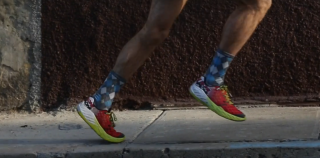
While Hoka One One has continued to refine its thickly cushioned shoes, it has also developed a series of speed shoes that are a bit lower to the ground and built for racing and fast training. One of the first to hit stores is the Clayton, a thickly cushioned shoe that has been engineered to offer cushioning, protection and energy return. The result is a category-breaking long-distance trainer/racer that’s both exceptionally wide and very stable but also impressively light, responsive and fast.
RELATED: Shoe of the Week—Hoka One One Clayton
RELATED: 2016 Running Gear Guide: Road Shoes
The post Video: The Hoka One One Clayton Launch Party appeared first on Competitor.com.
A 4.20-Mile Running Event Seeks to ‘De-Stigmatize’ Marijuana
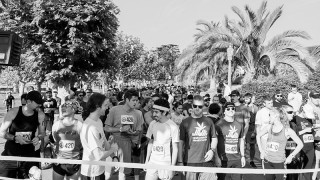
Photo: Richard Haick
The world-famous Santa Monica Pier near Los Angeles will be the site of the inaugural 420 Games Los Angeles on Saturday—and the activities kick off with a 4.2-mile run down the oceanfront walk toward Venice Beach.
The purpose of the 420 Games? “To de-stigmatize cannabis and the people who use it,” according to a press release.
“In 2014, I stepped out and created this new genre of athletics and cannabis use in order to inspire the rest of the world to step out with me,” said founder Jim McAlpine. “The 420 Games is humbled and honored to be credited with the creation of ‘CannaAthletics.’ The 420 Games’ purpose is to emphasize that highly functional people, even professional athletes, use cannabis and are hardly the lazy stoners the world has portrayed. Fostering a new, positive mindset about those who use cannabis is going to be absolutely critical for the national legalization of marijuana.”
The 420 Games started in San Francisco and was originally a 5K. It is now a 4.2-mile race with the tagline “Go the extra mile for cannabis!”
The number 420 (and offshoots like 4/20 and 4:20) is a historical code-term that refers to the consumption of cannabis in various forms. Recreational marijuana use was legalized in Colorado and Washington in recent years, while medical marijuana is legal in 23 other states.
Having said that, recreational use of marijuana is not currently legal in California, and accordingly, officials stress that the 420 Games is a non-smoking event. “We are forging new outlooks and a new respect for both cannabis and the people who use it… a cloud of smoke over our heads at the pier—both literally and figuratively—is not the message we want to send out to the world.” McAlpine said.
The 4.2-mile trek can be done running, walking, skateboarding or on a bike. A few former professional athletes will be on hand, including Heisman Trophy winner Ricky Williams and former NFL Pro-Bowler Kyle Turley.
Saturday’s event is the first of six stops in the 420 Games tour. It will also be in San Francisco, Boulder, Denver, Seattle and Portland later this year.
After the run will be a beer-tasting event at the Santa Monica Pier, followed by an after-party at a nearby nightclub.
The post A 4.20-Mile Running Event Seeks to ‘De-Stigmatize’ Marijuana appeared first on Competitor.com.
March 23, 2016
5 Places to Run In…Portland

The Waterfront Loop in Portland is popular with runners. Joshua Rainey Photography / Shutterstock.com
Home to dozens of elite runners, iconic road races and the headquarters of Nike and Adidas in North America, Portland, Ore., is a serious running city.
The vast amounts of public space, natural terrain and high school and college tracks that are open to the public means there are nearly an endless amount of trails and paths to explore, and miles to log. Here are some of the best spots in town.
Sauvie Island
This large island on the Columbia River, 10 miles from downtown, is super flat and beautiful in a pastoral sort of way, with hills, barns and farmland for scenery. You can add on easily to make it a 20-plus miler. You might see Nike’s elite Bowerman Track Club training here, as it’s one of the team’s go-to spots.
Leif Erickson Drive
Forest Park is a massive natural open space in Northwest Portland, and the 11.2 miles of this trail offers running at its best. The route is beautiful and shaded, with markers every quarter mile.
Wildwood Trail
For a more challenging run through Forest Park, try this hilly, 30.2-mile route that’s also stunning, and provides markers every quarter mile.
Waterfront Loop
The main loop that runs along each side of the Willamette River from the Hawthorne Bridge to the Steel Bridge (with the Morrison and Burnside bridges in between) is almost 3 miles. But now that the Tilikum Crossing bridge to the south—which serves pedestrians, bicycles and public transit but not cars—is open, you can make it longer.
Springwater Corridor
Another nice multi-use, pedestrian path from the south waterfront into wetlands, hills, farms and neighborhoods like Sellwood and even Gresham, 20 miles east. This path is also part of Hood to Coast, a legendary 195-mile relay race that takes place in August.
Bonus! A Few More Spots
Glendoveer Golf Course: Nike’s own high school cross country national championship, NXN, takes place on the muddy fairways of this golf course in the late fall, but there’s also a 2-mile woodchip trail encircling the course that’s open and popular with runners year-round.
Marquam Trail: A hardcore, 6.3-mile trail that snakes through Portland’s steep West Hills, with plenty of switchbacks and climbing and a few footbridges.
Mount Tabor Park: This park has a bit of something for everyone. The lower loops are nice and flat, while a winding route to the top is excellent hill training—and offers a big payoff at the summit with an epic view of the city.
Laurelhurst Park: This tranquil park in one of Portland’s more stately neighborhoods offers a rolling 1-mile loop on a paved, mostly shaded trail.
RELATED: 5 Places to Run In…Seattle
The post 5 Places to Run In…Portland appeared first on Competitor.com.
Out There: The Grieving Process

“You know you’ll spend more on fixing up this bike than what it’s worth, right?” My bike mechanic smiled—not kindly, but in that you-poor-sap-how-can-you-be-so-stupid? kind of way.
And he was right. Ten years ago, when this bike was a brand-new specimen, it was considered the best. The technology was state-of-the-art, the frame geometry innovative, the brand coveted. But that was 10 years ago. In comparison to today’s bikes, it’s an outdated piece of shit. Correction: an outdated piece of shit that’s costing me a lot of money.
When I hauled the bike into my local bike shop, my mechanic laughed. The tires were empty and cracked, the skewers missing, the frame covered in dust. A twisted cobweb dangled from the handlebars, which dangled from the frame by the shifting cables.
“You really want to ride this?” He asked. I nodded. The mechanic cocked his head curiously. “Don’t you have other bikes?” I nodded again before declaring I wanted to ride this bike. He sighed, muttered something under his breath, then began writing up a repair estimate.
This outdated piece of shit is not technically mine. It belonged to my mentor, Carlos, who loved and cared for this bike over the span of 10 years and 13 Ironman triathlons. It’s the bike he rode on almost all of our Sunday morning rides together, and—when cancer treatments made him too sick to ride—it’s the bike he loaned to me when my own ride broke beyond repair. It’s the bike I never got around to returning to him—in part because he said I could ride it for as long as I wanted, and in part because I was too cheap to spend money on a new bike.
“I’ll give it back to you as soon as you’re healthy enough to ride again,” I promised.
Carlos smiled and patted my hand. “Sure.”
But there’s one thing I didn’t tell him while he was sick: without our regular Sunday morning rides, I had lost my motivation to train for triathlons. Long rides just weren’t as much fun without him as a conversation partner. His bike was collecting dust in my garage, and I had shifted my focus to running.
And then Carlos died. His bike was still in my garage.
The night before the funeral, my friend Ashly asked how I was holding up. “I haven’t cried yet,” I confessed. “Do you think that’s weird?”
“People grieve in different ways, Susan,” Ashly replied. “I don’t think that’s weird at all.”
Still, I felt like I was doing the grief thing wrong—wasn’t I supposed to be doing something? My closest friend was dead. Shouldn’t I be wailing? Gnashing my teeth? Shaking my fists at the sky in anger? Surely if I could do those things, I could check off a few boxes in the grieving process and get my life back to normal. I tried many times to will a watershed moment into being; it never worked.
Grief is a weird journey. As it turns out, you can’t really push through to it to get to the finish line, because there isn’t really a finish line. Even the idea of getting back to “normal” is an absurd one. Months later, I’ve accepted that Carlos isn’t here anymore, and yet I forget. Something happens, and I think, wait until Carlos hears about this. Sometimes I even pull out my phone to text him. And then I feel the sharp pang of reality.
RELATED: Out There: A Winning Legacy
Before Carlos died, we talked about what he wanted done with his ashes. One of the things he requested was to be sprinkled in Austria, where he did his first Ironman. He asked if I’d do the race and take him along for the ride.
“It’s perfect,” he said excitedly. “You’ve already got my bike!”
Ah, yes. That outdated piece of shit in my garage. It hadn’t been touched in almost three years. Could it make it through another Ironman? Could I make it through another Ironman?
Last weekend, I finally got around to fixing up the bike. As soon as I picked up the spiffed-up bike from the shop, I took it out for a long ride in the sunshine.
This is the heartwarming part of the story where I should say putting all my disposable income into fixing up this bike turned it into a brand-new steed; that this 10-year-old machine suddenly transformed into a sleek bolt of greased lightning.
Or maybe this is the cathartic part of the story where I should say riding my best friend’s bike was a intense moment; that at the summit of some beautiful mountain, I finally cried.
Neither of those things happened. I remain tear-free, and the outdated piece of shit is still an outdated piece of shit.
And yet on that ride, I felt better. Lighter. Almost—dare I say?—normal. Wait until Carlos hears about this, I thought.
I looked down at the bike and smiled.
“It’s been a while,” I said. “We’ve got a lot to talk about.”
* * *
About The Author:
Susan Lacke does 5Ks, Ironman Triathlons and everything in between to justify her love for cupcakes (yes, she eats that many). Susan lives and trains in Salt Lake City, Utah with three animals: A labrador, a cattle dog, and a freakishly tall triathlete husband. She claims to be of sound mind, though this has yet to be substantiated by a medical expert. Follow her on Twitter: @SusanLacke.
The post Out There: The Grieving Process appeared first on Competitor.com.
Workout of the Week: Downhill Speed Sessions

If you're a trail runner, it's important to practice running on the type of terrain you'll be racing on. Photo: Shutterstock.com
Most experienced runners are aware of the benefits of including uphill repeats in their training schedules: increased power, strength and speed, improved VO2 max and also the reinforcement of running with good form, i.e., shortening your stride, driving forward from the hips, lifting your knees, engaging your core and pumping your arms.
But what about going downhill? Since it doesn’t take much effort to run away from the top of a hill, invites over-striding and only tends to make you sore and stiff anyway, running downhill probably isn’t worth practicing, right?
Not exactly.
“Downhill running puts an enormous eccentric load on both your quads and hamstrings, which is the reason people tend to get sore when doing too much downhill running,” says Steve Magness, author of “The Science of Running” who coaches distance runners the University of Houston. “What happens, though, is your body adapts to this stress load by repairing the microtears in the muscle fiber and strengthening the tendons so that they can withstand that eccentric strain in the future.”
Working on your downhill running in training can have huge benefits come race day. Along with strengthening your legs, including various types of downhill repeats in your training schedule from time to time promotes faster turnover, which will improve your basic speed, helping you become a more complete runner who can take advantage of the declines on an undulating race course.
RELATED: Perfect Your Downhill Running Form
When running downhill, it’s important to pay close attention to your form and effort level. Going kamikaze down a steep grade is a likely recipe for disaster, so it’s important to exercise some discipline, especially if you haven’t done much downhill training in the past. Avoid over-striding by employing a rapid turnover and trying to strike directly underneath your center of gravity as best as possible. Be light and nimble on your feet. Finally, look where you’re going and use your arms for balance, especially if it’s a steep descent.
Not sure how to start going down? Here are a few workouts worth sprinkling into your training schedule. Remember, downhill running—especially if you haven’t been doing a lot of it—places a tremendous amount of stress on the body, especially your quads and hamstrings. Allow yourself the opportunity to recover properly in the days that follow.
Downhill Strides
Seek out a gradual incline in the range of 3-5 percent that’s roughly 100-200 yards long. After easy runs twice a week, perform a set of six to eight 20-second accelerations, alternating directions so that the odd-numbered reps take you uphill and the even-numbered ones go downhill. When doing strides after a run, accelerate for 5 seconds, hold close to your fastest sustainable speed for 10 seconds and gradually decelerate over the final 5 seconds. Post-run strides are a quick and easy way to improve turnover and reinforce good mechanics.
Up-Downs
Often when we do uphill repeats, it’s common practice to stop at the top of the hill to catch our breath before walking or jogging back down before repeating the process. A simple twist on such a workout is to run up a 5-7 percent grade at a steady, moderately challenging effort and over the other side (or right back down the hill) at a quick—but not all-out—clip. An example would be running uphill for 1-2 minutes before turning around and running back down at a quick, but controlled, effort. This is a great workout that emphasizes both concentric and eccentric loading of the muscles and teaches you how to shift gears in preparation for a rolling race course. If you’re a trail runner, doing Up-Downs on the type of terrain that you’ll be racing on is good practice for improving your footwork and descending skills.
400m Intervals
Eight, 10, 12 (or more) one-lap repetitions of the track at a fast pace has long been many a runner’s staple speed session, but moving this tried-and-true workout to a downhill stretch of road or trail every once in a while is a great way to work on accelerating your speed—literally—as well as for developing a better sense of how race effort relates to race pace. For example, running 12 x 400m on a gentle 3-5 percent decline at your 5K race effort with 90 seconds recovery between reps will yield a faster pace than you’d run for the same workout on a track or flat stretch of road or trail. Aside from promoting a faster turnover, downhill intervals can help you to better understand the relationship between effort and pace, which will come in handy when you’re racing on a rolling course.
The post Workout of the Week: Downhill Speed Sessions appeared first on Competitor.com.
Study: Mile Road Races are Booming
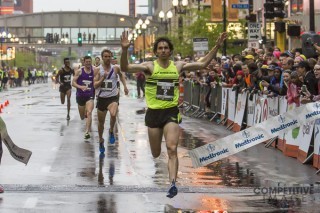
The Medtronic Twin Cities 1 Mile in Minneapolis. (Photo: Paul Phillips/Competitive Image)
Road races in general are seeing unprecedented success—particularly 5Ks and half marathons. But Running USA recently studied how 1-mile road races are doing in the United States.
The answer? Very well.
Mile road race participation in the U.S. has jumped 64 percent since 2010, and has seen more than 100,000 finishers in 2013, 2014 and 2015. The growth in participation is mirrored by a growth in total number of events. In 2010, there were 726 1-mile road races; in 2015 there were 1,350.
Participation peaked in 2014 when 117,000 runners finished a mile road race. It dipped slightly to 113,000 in 2015, but the overall trend is eye-catching.
“The growth in popularity of the mile distance is a trend all race organizers should take note of,” Running USA CEO Rich Harshbarger said. “It’s the perfect introduction to those who’ve never run a race before and is a perfect time commitment in training and race day for those with busy schedules.”
RELATED: 7 Must-Do Mile Road Races
RELATED: How the Mile Can Help Boost Enthusiasm in Running
The post Study: Mile Road Races are Booming appeared first on Competitor.com.
Shoe Of The Week: Zoot Solana 2

Zoot Sports, a brand known for triathlon gear and its surf-oriented Southern California style, continues to make running shoes for the heartland. The second edition of this easy-riding neutral trainer is even better than the award-winning original. The biggest changes are its updated heel construction that secures the foot better and a new, more breathable and flexible upper that helps create a snazzier fit. It retains the luxurious blend of softness, snappy responsiveness and just enough inherent stability from the injection-molded midsole, making it a versatile, smooth-running everyday trainer with a little bit of kick to it. It has a plush, seamless interior that will tempt you to wear it barefoot—and then you might never wear socks again!
It wasn’t so long ago that $100 was in the mid-range of running shoe prices, but the Solana 2 proves that you don’t need to break the bank to get a dependable training shoe. Don’t get the idea that a $100 is made from inferior materials; it’s not. This is a solid, well-made training shoe at any price, but at $100 it’s an amazing bargain.
This is the shoe for you if … you’re looking for a reliable neutral shoe that’s capable of high-mileage training with enough versatility to execute some faster workouts.
Price: $100
Weights: 9.5 oz. (men’s), 8.5 oz. (women’s)
Heel-toe offset: 8mm; 28mm (heel), 20mm (forefoot)
Info: ZootSports.com
RELATED: Shoe Of The Week—Hoka One One Clayton
The post Shoe Of The Week: Zoot Solana 2 appeared first on Competitor.com.
March 22, 2016
Photos: Trail Running in San Luis Obispo, California
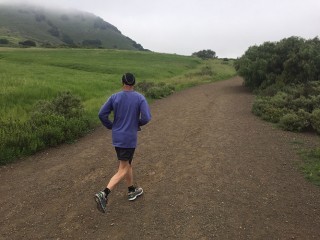
The charming central California town of San Luis Obispo lies roughly midway between Los Angeles and San Francisco, and just a few miles from the Pacific Ocean. With a population of just 45,000, it is one of the rare California destinations that’s not overflowing with people.
One of the perks of visiting San Luis Obispo is its outdoor space, including trails which explore the hills surrounding the city. Recently, a few locals took on a unique “Tri Tip Challenge” involving the climbing of three prominent peaks that surround the city—High School Hill, Cerro San Luis Obispo and Bishop Peak—through a blend of running and hiking.
Here are a few running shots from the adventure, which give a glimpse of San Luis Obispo’s natural beauty. Photos taken by Ryan Wood.
Photo Gallery
1 of {count}
Back to Start
View Larger Image

Descending the steep High School Hill trail on a foggy morning.
View Larger Image

At the base of Cerro San Luis Obispo before the climbing begins.
View Larger Image

Climbing Cerro San Luis Obispo, also known as Madonna Mountain.
View Larger Image

Among the many trails on Cerro San Luis Obispo, one appears to lead directly to Bishop Peak to the north.
View Larger Image

The summit of Bishop Peak is reached via rocky switchbacks.
View Larger Image
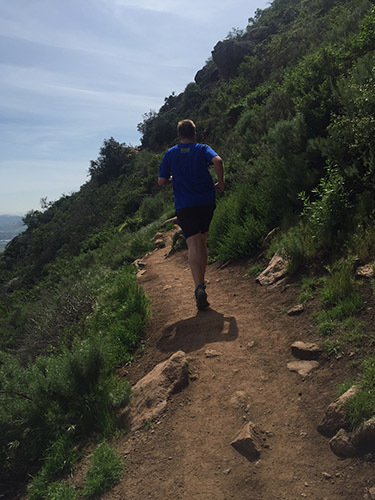
Climbing Bishop Peak.
View Larger Image

Two runners chipping away at the switchbacks on their way to the top.
View Larger Image

From the top of Bishop Peak, you can see High School Hill (left) and Cerro San Luis Obispo (right) with much of the city of San Luis Obispo in between.
View Larger Image

Descending Bishop Peak. You can see vultures flying in circles over the runners.
View Larger Image
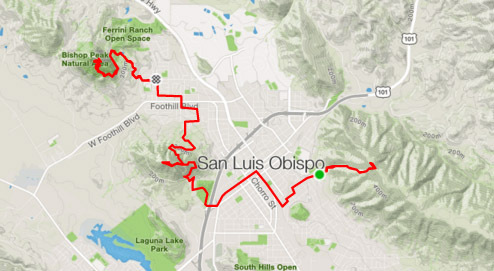
A look at the route that made up the Tri Tip Challenge—a unique adventure that climbed the three peaks but also required crossing through downtown San Luis Obispo.
Related Galleries
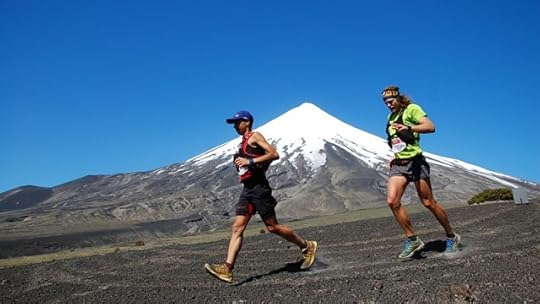
Photos: A Glimpse Inside The Volcano Ultra Trail Races in Chilean Patagonia
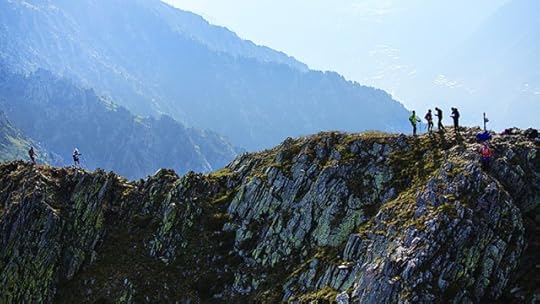
Photos: Andorra’s Ultra Trail Vallnord

Photos: The 2015 North Face Endurance Challenge Championships

Photos: 2015 McDowell Mountain Frenzy Trail Runs

More Galleries
The post Photos: Trail Running in San Luis Obispo, California appeared first on Competitor.com.
Can Heart-Rate Variability Help Runners Optimize Their Training?

Photo: Shutterstock.com
With the fact that no two runners respond to the same training in the same way, endurance training is as much art as it is science. That’s why having a good coach is priceless. Quantifying how hard you’re training with heart rate or the traditional constituents of training (mileage, intensity, frequency) measures the effort put into training but doesn’t assess the actual response. Just like measuring how much gas you put in your car doesn’t tell you exactly how far you can drive it before it runs out of gas (that depends on engine performance and how you drive the car), knowing that you ran 40 miles in a week doesn’t really tell you if you’ll end up running a faster marathon.
If only training adaptation was as simple as an equation: training + nutrition + sleep + life stress + everything else = adaptation. If it was that straightforward, changing one or more of those variables should result in improvements in fitness. But unfortunately it’s not that clear-cut and much of the research into genetics and exercise is devoted to understanding what separates the training “responders” from the “non-responders.”
While the variables that respond (or not) to training and constitute endurance performance—VO2max, lactate threshold, running economy—can be measured in a laboratory, they typically aren’t readily available to the average runner.
The answer to this need to quantify the effects of training on the body may be something called heart rate variability (HRV), a newly accessible means of assessing performance improvement and recovery state. HRV reflects the input of the heart’s automatic regulation and is a measure of the time gap between heartbeats, usually assessed while resting or sleeping. The heart accelerates during inhalation and slows down during exhalation and this difference is known as HRV. Research has linked a high HRV—larger time gap between heart beats—to positive adaptation and fitness, while a smaller time gap or HRV is linked to fatigue, overreaching and overtraining.
HRV can also be used to determine the training response to specific types of training. In a 2016 study, presented in Medicine and Science in Sports and Exercise, researchers examined the effects of an 8-week HRV guided running program on running performance. Forty recreational endurance runners were divided into an HRV-guided experimental training group and a traditional, predefined training group (trained according to a predefined training program that included 2-3 moderate/high intensity training sessions/week). For the experimental HRV group, the timing of higher intensity training was based solely on HRV, measured every morning. If the subject’s HRV was within a normal, acceptable range, higher intensity workouts were programmed. If HRV fell outside that range, low intensity training was performed.
The researchers found that after the 8-week training period only the HRV-guided training group improved its performance in a 3000m running trial, even though they performed less moderate and high intensity training sessions compared with the predefined training group. The study concluded that, “The timing of moderate and high intensity training sessions according to HRV is more optimal compared to subjectively predefined training.” In other words, following a training plan out of a book or off of a website may not optimally improve performance.
RELATED: Three Heart-Rate Mistakes Everyone Makes
Similarly, HRV shows promise in identifying what types of exercise are individually optimal before an exercise program is started. In another study, published in the Scandinavian Journal of Medicine and Science in Sports in 2015, researchers measured the response of recreational runners to either high volume or high intensity training. By assessing HRV before the training period started, the researchers hoped to better understand how individuals would respond to different intensities and amounts of exercise.
After the 16-week program had concluded, the study determined that the runners with a higher HRV improved to a greater degree with high-intensity training while those with a lower HRV responded better to a higher training volume rather than training intensity. The researchers concluded, “HRV may be used to individualize endurance training in recreational endurance runners, especially to adjust training volume and intensity, to achieve greater improvements in endurance performance.”
Basically, HRV may hold the key to telling runners how to train for maximum gain before they start a training program. Having a high HRV may indicate that you can take a greater dose of high intensity training. A low HRV may be a red flag, or at least a yellow one, warning that long, slow distance training is needed. Wouldn’t you like to know the most efficient way to train for your next race?
The lead author of both of the above studies, Dr. Ville Vesterinen of Finland’s Research Institute for Olympic Sports, recommends that 3-4 HRV assessments per week be used to achieve a good, overall view of the current training status. “Given the large day-to-day variation, it is better to use long-term (e.g. 7-day) trends rather than one single HRV value. It is also essential to standardize the assessment protocol—time of day, length of measurement—to ensure good quality information.”
Measuring heart rate variability used to require complicated cardiac monitoring. Now, all it takes is a smart phone that uses any one of a number of apps —ithlete and Emfit QS to name two—to analyze heart-rate information and you have HRV information at your fingertips.
A greater understanding of HRV may very well take the guesswork out of training. Instead of the hit or miss method of trying different programs to determine which one makes you the fastest, the information gleaned from HRV could turn you from a non-responder to a responder.
RELATED: Are you overtraining?
The post Can Heart-Rate Variability Help Runners Optimize Their Training? appeared first on Competitor.com.
The 2016 IAAF World Indoor Championships, in Pictures

The World Indoor Championships in Portland featured plenty of amazing moments, both from American runners and international stars.
RELATED: Indoor Track Shows Its Potential in Portland
Here’s a look at the action, in photos taken by Pierre Robichaud:
Photo Gallery
1 of {count}
Back to Start
View Larger Image
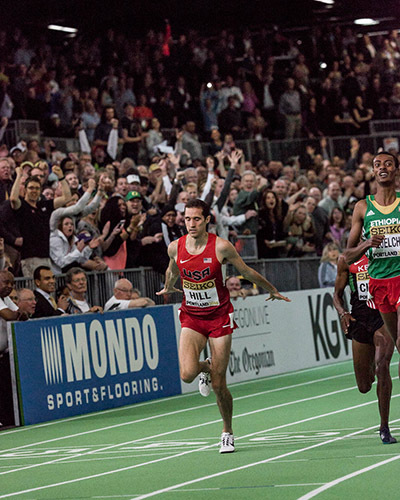
View Larger Image

View Larger Image

View Larger Image

View Larger Image

View Larger Image

View Larger Image
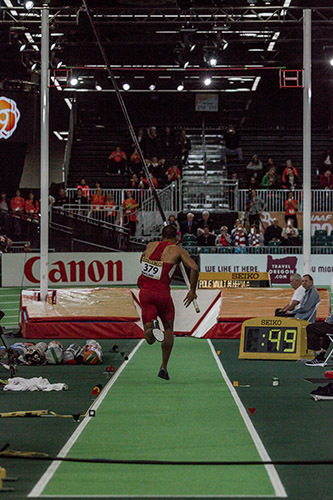
View Larger Image

View Larger Image

View Larger Image

View Larger Image

View Larger Image
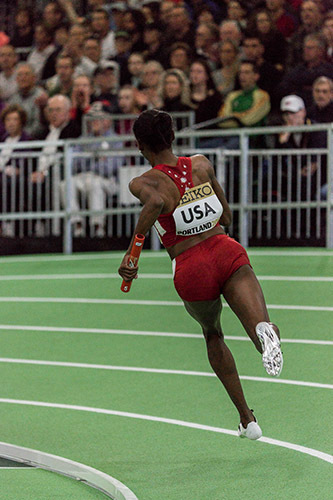
View Larger Image

View Larger Image

View Larger Image

View Larger Image

View Larger Image
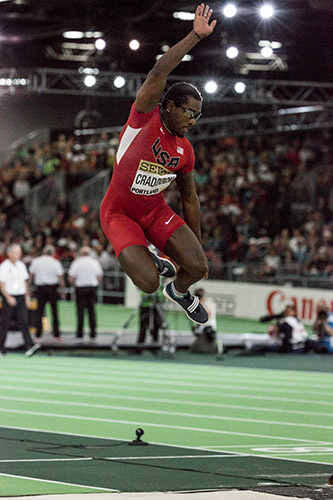
View Larger Image
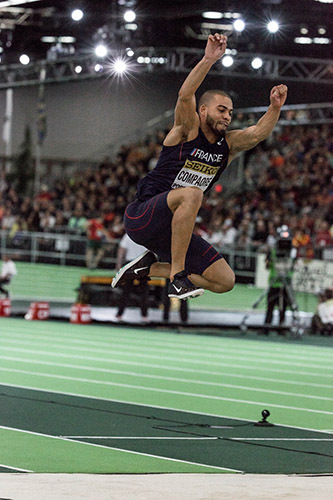
View Larger Image
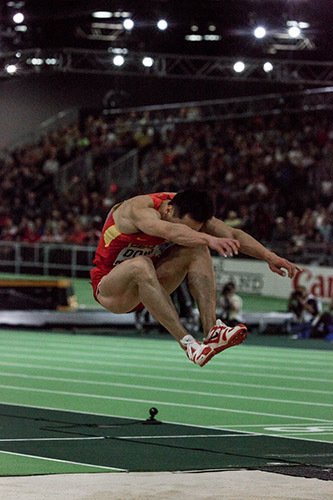
View Larger Image
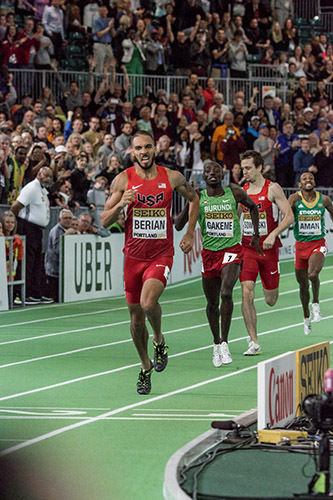
View Larger Image

View Larger Image

View Larger Image

View Larger Image

View Larger Image

View Larger Image

View Larger Image

View Larger Image
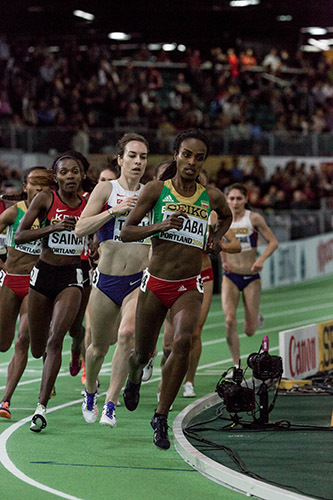
View Larger Image

View Larger Image

View Larger Image

View Larger Image
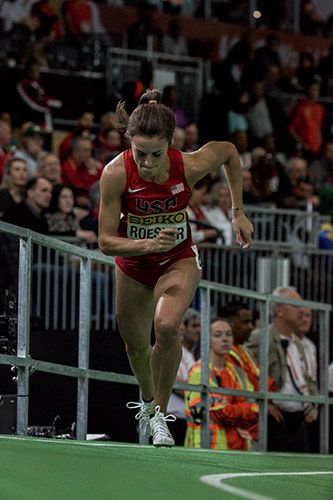
View Larger Image

View Larger Image

View Larger Image

View Larger Image

View Larger Image

View Larger Image

View Larger Image

View Larger Image

View Larger Image

View Larger Image

View Larger Image


More Galleries
The post The 2016 IAAF World Indoor Championships, in Pictures appeared first on Competitor.com.
Ryan Hall's Blog
- Ryan Hall's profile
- 21 followers



